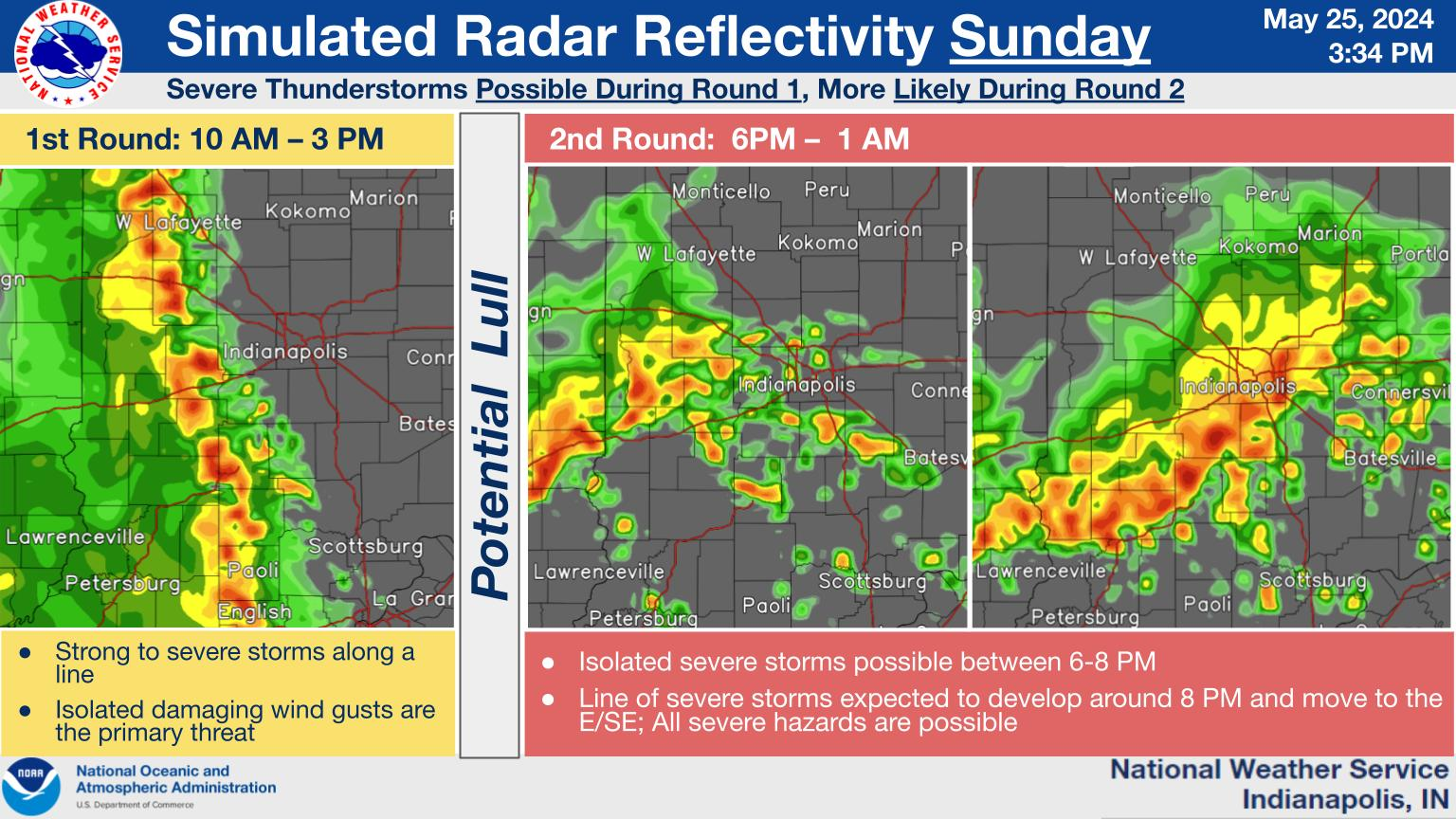Indianapolis Weather Radar Overview
Indianapolis weather radar is a vital tool for monitoring weather conditions and providing timely warnings of severe weather. The system is operated by the National Weather Service (NWS) and is part of a nationwide network of weather radars.
The Indianapolis weather radar system uses a Doppler radar, which is a type of radar that can detect the speed and direction of moving objects. This allows the radar to track the movement of precipitation and identify areas of rotation, which can indicate the presence of tornadoes or other severe weather.
The Indianapolis weather radar is currently showing scattered showers and thunderstorms throughout the city. The heaviest rain is expected to fall between 2 and 4 PM. If you’re planning on heading to the Indianapolis 500 today, be sure to check out the latest weather updates here.
The race is scheduled to start at 12:00 PM, but it could be delayed if the weather conditions worsen. The Indianapolis weather radar will continue to monitor the storm and provide updates as needed.
History
The Indianapolis weather radar system was first installed in 1994. The system has been upgraded several times over the years, most recently in 2019. The upgrades have improved the radar’s ability to detect and track severe weather, and have also increased the range of the radar.
Interpreting Indianapolis Weather Radar Data

Understanding Indianapolis weather radar data can provide valuable insights into current and upcoming weather conditions. The radar detects precipitation particles in the atmosphere, allowing meteorologists and individuals to track the movement, intensity, and type of precipitation.
Types of Weather Patterns and Phenomena
Indianapolis weather radar can detect various weather patterns and phenomena, including:
- Rain: Radar data shows the intensity and coverage of rainfall, helping predict the likelihood of flooding or heavy precipitation.
- Snow: Radar can differentiate between rain and snow, providing information on snowfall accumulation and potential road conditions.
- Hail: Radar can detect hailstorms, indicating the size and intensity of hailstones.
- Tornadoes: Doppler radar can detect the rotation within thunderstorms, providing early warning of potential tornadoes.
- Wind: Radar data can be used to estimate wind speeds and directions, aiding in predicting severe storms.
Predicting and Tracking Weather Events
Radar data is essential for predicting and tracking weather events. By monitoring the movement and intensity of precipitation, meteorologists can issue timely warnings for:
- Flooding: Radar data helps identify areas at risk of flooding, allowing for early evacuation and mitigation measures.
- Severe storms: Radar can track the development and movement of severe storms, providing warnings for high winds, hail, and tornadoes.
- Winter weather: Radar data aids in predicting snowfall accumulation and icy road conditions, helping transportation and emergency services prepare.
Applications of Indianapolis Weather Radar

Indianapolis weather radar plays a crucial role in various fields, providing valuable information for decision-making and risk mitigation. Its applications extend to meteorology, aviation, and emergency management, among others.
Meteorology
In meteorology, weather radar data is indispensable for tracking and forecasting precipitation patterns. By analyzing radar reflectivity and velocity data, meteorologists can determine the intensity, movement, and type of precipitation, such as rain, snow, or hail. This information is crucial for issuing timely weather warnings and advisories, helping communities prepare for severe weather events.
Aviation, Indianapolis weather radar
Weather radar is essential for aviation safety. Pilots rely on radar data to detect and avoid hazardous weather conditions, such as thunderstorms, turbulence, and icing. By providing real-time information about weather patterns, radar helps pilots make informed decisions about flight paths and ensures the safety of passengers and crew.
Emergency Management
In emergency management, weather radar is a valuable tool for disaster preparedness and response. It can provide early warning of approaching storms, allowing emergency responders to mobilize resources and evacuate vulnerable areas. Radar data also assists in assessing the extent of damage after severe weather events, facilitating recovery efforts.
Case Study: The Indianapolis Weather Radar played a crucial role in mitigating the impact of the 2011 tornado outbreak in Alabama. By providing timely warnings, the radar enabled communities to seek shelter and take precautions, resulting in a significant reduction in casualties and property damage.